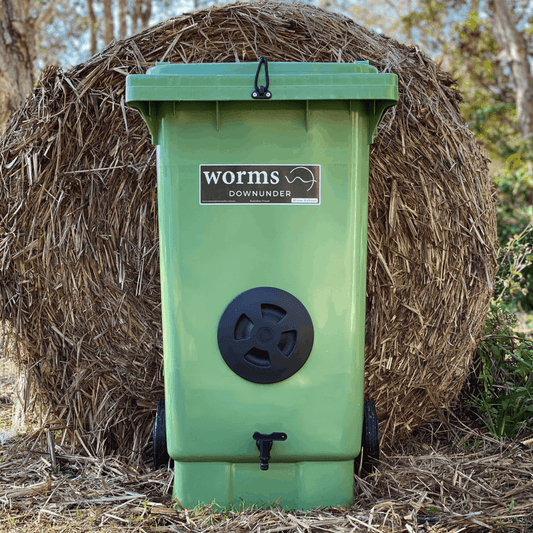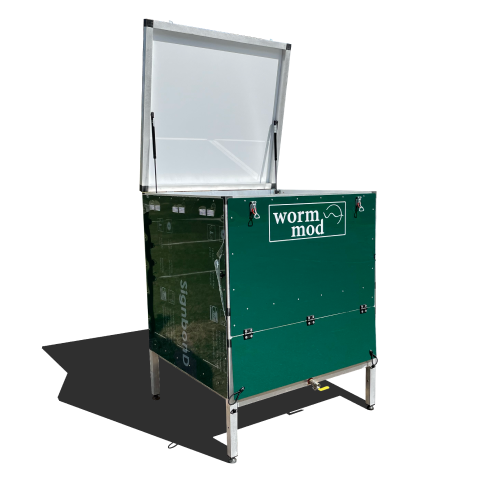When setting up a worm farm, most people will start with the physical worm farm first, buy a handful of worms (often sold in measly numbers, spoiler alert, 1000 is a small number of worms) and then load it up with kitchen scraps, only to be disappointed when their worm farming endeavour is unsuccessful. The key principle here is that worms will process up to 50% of their body weight per day. This means that 250g of worms (approximately 1000 worms) will compost around 125g of waste per day. Following the 1:1 ratio of ‘greens’ to ‘browns’, that’s approximately 60g of green waste and 60g of brown waste. What that looks like is a couple of lettuce leaves and a handful of mulch!
To calculate how many wrigglers you need, there are three important factors to consider: worms, waste and space. Read on to see how we break this down into four simple steps:

How much waste?
Before you even think about purchasing some worms, consider your objective from your worm farm. How much waste do you want it to process?
Roughly calculate the amount of waste you are producing. As this number is bound to fluctuate, we recommend rounding up to prevent any imbalances in your worm farm from over feeding.
Type of waste
What type of waste are you producing – how much of the waste is a carbon and nitrogen source? An easy way to think of it is “greens” (nitrogen) and “browns” (carbon). Worms love both greens and browns equally so aim for a 1:1 ratio to keep your worms happy.
“Greens” think food scraps, fresh glass clippings or green waste from your garden etc.
“Browns” think brown/aged leaves, cardboard, shredded paper, mulch etc.
Here’s an example: If you measured approximately 1kg of food scraps a day (“greens”) in step 1, aim to balance it with approximately 1kg of “browns”, resulting in 2kg of waste to be composted per day.

How many worms for the amount of waste?
On average, worms will process up to 50% of their body weight a day (which is why they are the perfect super composter!), so use this to calculate how many worms will be required to churn through your waste.
How many worms am I getting? A good rule of thumb is that the number of worms is approximately 4x their weight i.e. 4kg = 16,000 worms or 125g = 500 worms.
Choosing the right size home
What size environment will I need to house my worms? If you have ever lived in a share-house then you know the importance of having your own space – it is no different for your little workers. Review your potential worm farm to see how many worms it can comfortably house or enquire about its processing capacity.
Our 140L size worm habitat can house up to 4kg (16,000) worms which is why it has a processing capacity of up to 2kg (or 4L) a day.
Summary
You can see how establishing a worm farm with an effective number of worms right off the bat can be expensive, which is why you’ll generally see smaller quantities available on the shelves at your local store.
Don’t worry, you don’t have to start with big worm numbers in the beginning, worms will reproduce and self-regulate to suit the size of their environment. Numbers should double once every 3 months (if the right environmental conditions are met, i.e. they are happy!). So, if your patient you can start your worm farm journey with any quantity of worms. Just remember that your worms are the foundation, so make sure your waste inputs are appropriate for the numbers you have in there.
Just starting out and wanting to explore your worm farm options? Look here!



